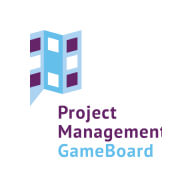Request for Proposal (RFP)
Request for Proposal (RFP) Template
An RFP is a formal document that organizations use to solicit bids from consulting firms or agencies for specific projects/services. Submitting a response to an RFP can be expensive, time-consuming, and resource-heavy for consulting firms. To combat this, we have created a Miro template that aims to help firms deliver RFPs in a more efficient way, focusing on winning the bid.
Use our template as a starting point to leverage Miro for your RFPs and customize it to suit your specific business needs!
Key Benefits of using Miro for your RFP:
Have a Single Source of Truth: Miro is the visual workspace where the RFP work comes together. Response team members have access to the latest documents and artifacts of the project, ensuring everyone is always up to speed.
Enable Async Collaboration: Miro allows teams to collaborate no matter how, where, or when they work. Response team members can comment, collaborate, and review project files at their desired time. You can also leverage Talktrack to work asynchronously reducing the amount of time spent in meetings.
Reduce Costly Assumptions: Miro allows you to bring your client to a board giving them an easy way to reply to questions on their own time, reducing the number of assumptions made along the way. This leads to a higher quality response that is more factual and aligned with customer expectations, increasing the likelihood of winning their business.
RFP Template Structure:
Onboarding: Kick things off with a Talktrack from the Project Lead, allowing response teams to onboard new team members asynchronously, removing the need for additional meetings. Also include important details for each member of the RFP response team outlining their role within the RFP.
Unpacking the RFP & Avoiding Assumptions: Provide important information on the client such as their project number, details, & how team members should log their time. This is also where the actual RFP document can be embedded for cross-functional review. Response team members can leave questions for the client right on the Miro board for maximum visibility.
RFP Specifications: Align on the problem the team is trying to solve, team roles and responsibilities, and the proposed response strategy.
Team Workshop: Set the team up for effective collaboration with an interactive team workshop structured around aligning on how the team will tackle the RFP.
Project Management: Leverage Miro Project Management templates such as a Kanban template within the RFP board to ensure deadlines are met.
Content Delivery: A section dedicated to "completed," "in progress," and "to be reviewed" client-facing deliverables, keeping everything in one place.
Submission: Once the entire project has been completed, the submitted document can be embedded on the Miro board for any necessary future review.
Retrospective: A crucial part of the RFP is performing a retrospective review after submission focused on improving the process for future RFPs
Who should use this?
Consultants frequently working on RFPs as project leads
RFP response teams wanting to foster better collaboration, transparency, and alignment throughout their RFP process
Keywords: Request for Proposal, RFP, Project Planning, Consulting



Comments
Read our Community Guidelines and Terms of Use.